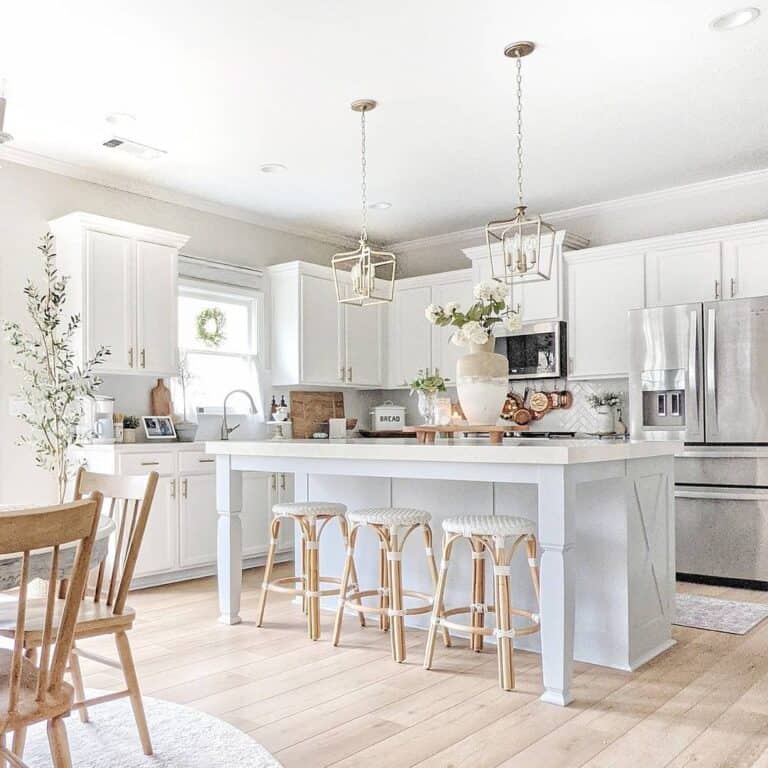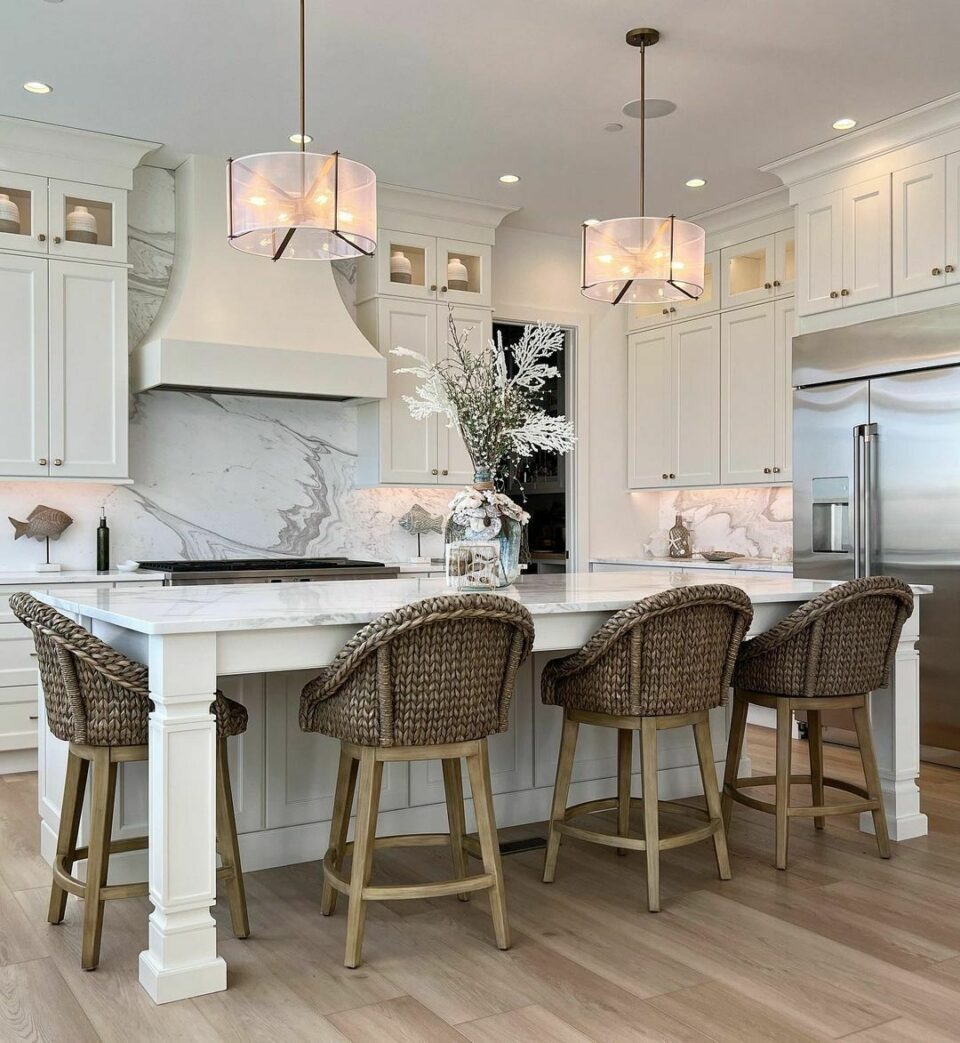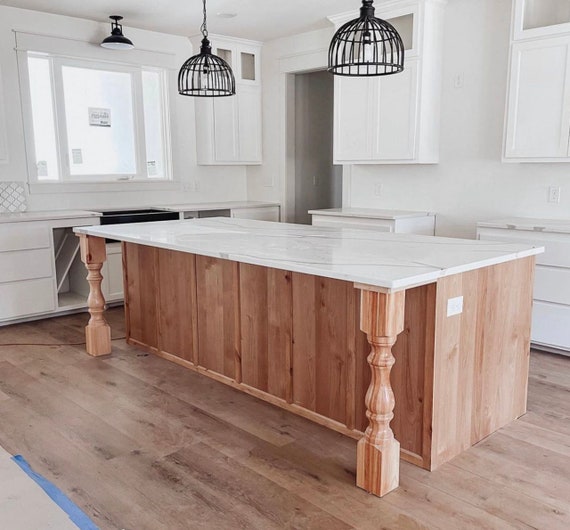Explore Modern and Standard Designs in Legs For Kitchen Island Tasks
Necessary Elements to Think About When Choosing Legs For Kitchen Area Island
Choosing the ideal legs for a kitchen island entails a mindful assessment of numerous factors that can substantially influence both capability and visual appeal. Amongst these, the selection of product plays a crucial function in ensuring resilience, while the style has to match the existing decor. Considerations such as elevation and weight assistance are essential for security and comfort. As we check out these elements, it becomes clear that each decision can have significant effects for the total kitchen area experience. What nuances should be considered in each of these classifications to attain the excellent balance?
Product Options
When selecting legs for a cooking area island, understanding the numerous product alternatives is essential for accomplishing both aesthetic appeal and architectural integrity (Legs For Kitchen Island). The selection of product substantially affects not only the resilience of the island however likewise its total style and performance
Steel legs, frequently made from stainless steel or wrought iron, contribute a contemporary and industrial feel while making certain resilience and security. These products are immune to use and can support significant weight, making them excellent for bigger islands.
One more option is engineered products, like MDF or plywood, which can be a lot more cost-effective while still offering a series of finishes. However, they might not provide the exact same degree of stability as solid timber or steel. Last but not least, products such as acrylic or glass can produce a modern look, though they may require added support to make certain security.
Inevitably, the choice of material for cooking area island legs need to align with the desired functionality and the total motif of the cooking area.
Design And Style

When considering design, the form and surface of the legs are vital. Conical legs can give a feeling of agility and style, while thicker, much more durable legs can communicate toughness and stability. Additionally, the surface-- be it painted, discolored, or all-natural-- must enhance the kitchen cabinetry and countertop materials to develop a unified look.
In addition, the layout of the legs can likewise mirror personal preference. Custom or ornamental legs, such as those including intricate carvings or unique geometric forms, can offer as focal factors, adding character and personality to the cooking area. Eventually, the appropriate option will not just improve functionality yet likewise boost the aesthetic allure, making the kitchen area island a standout attribute of the home.
Height Factors To Consider
Choosing the suitable height for kitchen island legs is critical, as it straight affects both performance and convenience. The typical elevation for a cooking area island typically ranges from 36 to 42 inches, aligning with typical kitchen counter elevations. A 36-inch height is excellent for cooking and cooking, permitting for comfortable usage of cooking area home appliances and tools. Conversely, an elevation of 42 inches is get more often preferred for islands planned for bar seating, suiting taller stools and using an informal eating experience.

It is additionally vital to make up individuals' preferences and heights. Tailoring the height can ensure a comfy experience for all member of the family, making the kitchen area island a more functional and delightful area.
Weight Assistance
Making sure sufficient weight assistance for kitchen area island legs is essential for both security and functionality. The kitchen area island frequently offers multiple objectives, including cooking, my sources dining, and extra storage space, requiring a durable support framework. When picking legs, it is important to take into consideration the general weight ability required based upon the island's planned use and the materials that will certainly be put on it.
The option of product for the legs plays a significant function in their weight-bearing capacities. Solid wood, steel, and heavy-duty composites normally give exceptional stamina contrasted to lighter products. In addition, the design of the legs-- whether they are directly, tapered, or have a pedestal type-- can affect their capacity to distribute weight efficiently across the framework.
In addition, the leg placement should be tactically prepared to improve security. Legs placed at the edges or with a bigger base can much better support heavier lots. Constantly consult the producer's specs relating to tons limitations to make sure that the legs can maintain the designated weight without jeopardizing security. In recap, choosing kitchen area island legs with sufficient weight support is vital for producing a functional and safe cooking room.
Installation and Upkeep
Appropriate installation and upkeep of kitchen area island legs are crucial for making certain durability and stability. To start, it is vital to follow the maker's guidelines throughout installation. This usually includes securing the legs to the space station using proper fasteners, making sure that the legs are level and lined up. Utilizing a level device can help protect against wobbling and improve the overall aesthetic allure of the kitchen island.
As soon as installed, routine upkeep is essential to preserve the stability and appearance of the legs - Legs For Kitchen Island. For wood legs, routine cleaning with a damp fabric and application of appropriate timber gloss can prevent moisture damage and preserve their surface. Steel legs might call for a mild cleansing solution to remove grease and grime, complied with by a dry fabric to stop corrosion development
Furthermore, examine the legs frequently for signs of wear or damages, such as fractures or loose joints. Tightening screws or bolts as required can likewise prolong the life-span of the legs. By adhering to these installment and upkeep practices, home owners can make sure that their kitchen island continues to be strong and visually appealing for several years to come.
Verdict

Visual coherence is critical in picking the style and style of legs for a cooking area island, as these elements helpful site considerably affect the overall atmosphere of the room. Conical legs can provide a sense of agility and style, while thicker, more robust legs can communicate toughness and security.Choosing the suitable height for kitchen area island legs is critical, as it directly impacts both performance and comfort. In summary, choosing kitchen area island legs with ample weight assistance is essential for creating a practical and risk-free culinary area.
In final thought, choosing legs for a kitchen area island requires cautious factor to consider of different aspects, consisting of material choices, style, height, weight assistance, and installment.